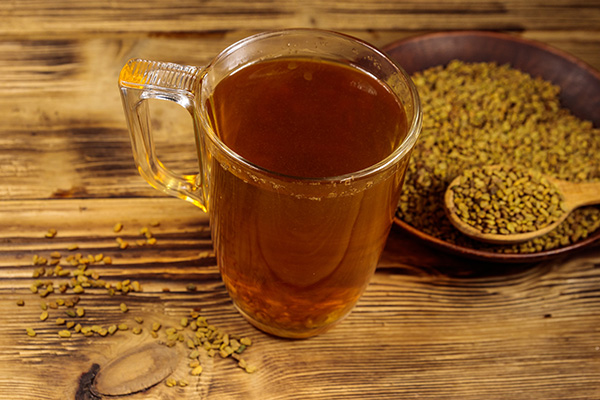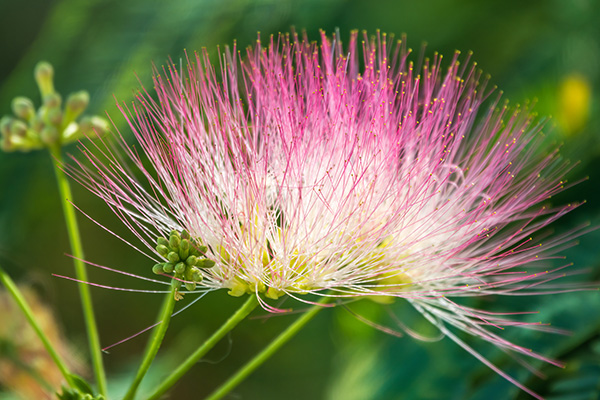What Herbs, Spices, and Herbal Teas Are Good for Toothache?
Toothache can be a frustrating and painful experience, often caused by tooth decay, gum infection, or tooth sensitivity. While it’s essential to consult a dentist for proper treatment, certain herbs, spices, and herbal teas can offer temporary relief.
In this blogpost, we will explore the advantages of using natural remedies for toothache relief.

Peppermint Tea
Peppermint tea is a good choice for toothache relief thanks to its natural numbing and cooling properties. Menthol, the primary component in peppermint, delivers a calming effect that aids in relieving pain and reducing inflammation in the impacted area (1). Furthermore, peppermint tea exhibits antibacterial properties that could play a role in preventing infection.
Here’s how to use peppermint tea for toothache relief:
- Prepare the tea: First, steep a peppermint tea bag in hot water for 5-10 minutes.
- Cool the tea bag: After the steeping, take the tea bag out of the water. Let it cool for a few minutes.
- Apply the tea bag: Gently place the warm, damp peppermint tea bag directly onto the affected area in your mouth. Ensure the tea bag is in direct contact with the sore tooth or gum to maximize its soothing effects.
- Leave the tea bag in place: Keep the tea bag pressed against the painful area for about 5-10 minutes. The active ingredients in the peppermint tea will help numb the pain and reduce inflammation.
- Discard the used tea bag: After using the tea bag, dispose of it, and do not reuse it.
- Repeat as needed: You can repeat this process with a new tea bag several times a day.
The method above involves using peppermint tea bags rather than drinking the tea. Unfortunately, drinking peppermint tea or any other herbal tea is unlikely to provide substantial pain relief.
Ginger Tea
Ginger tea is a reliable option for toothache relief, given its remarkable anti-inflammatory and pain-easing properties. The active compound gingerol helps reduce pain and inflammation in the affected area (2).
To apply ginger tea topically, steep a ginger tea bag in hot water for several minutes, allow it to cool to a warm temperature, and then eliminate any excess water. Place the warm tea bag directly on the painful area in your mouth for 10-15 minutes, allowing the ginger to alleviate discomfort. Repeat this process as needed for pain relief.
Drinking ginger tea may provide general health benefits but is unlikely to impact toothache significantly. Topical application is the key to effective toothache relief using ginger tea.
Chamomile Tea
Chamomile tea has anti-inflammatory properties, making it a good option for temporary tooth pain relief (3).
While drinking chamomile tea can provide general health benefits, it is unlikely to impact toothache pain significantly. For effective toothache relief, it is crucial to apply chamomile tea bags topically, directly to the painful area in your mouth, as this method allows the beneficial properties of chamomile to target the source of discomfort more effectively.
Cloves
Cloves benefit toothaches due to their analgesic, anti-inflammatory, and antibacterial properties. Eugenol, the main active compound in cloves, acts as a natural anesthetic, helping to numb and alleviate pain (4). It also helps reduce inflammation, relieves toothache, and combats oral bacteria that cause dental issues.
To use cloves for toothache, follow these steps:
- Clean and dry a whole clove or use clove oil.
- If using a whole clove, gently chew it for a few seconds to release the eugenol, then position it near the affected tooth without biting down.
- When using clove oil, soak a cotton ball or swab in the oil and apply it softly to the impacted area.
- Keep the clove or clove oil in place for approximately 15-20 minutes, then rinse your mouth with warm water.
Use this remedy sparingly, as excessive use can cause irritation. Consult a dentist for persistent toothaches or severe pain.
Thyme
Thyme can help with toothache thanks to its antiseptic and anti-inflammatory properties, which alleviate pain and decrease inflammation. Thymol, the active ingredient in thyme, exhibits antimicrobial effects, combating infection and promoting oral health (5).
To apply thyme essential oil, combine a few drops of the oil with equal water and soak a cotton ball in the mixture. Place the cotton ball on the affected tooth and surrounding gum area for relief.
Turmeric
The anti-inflammatory, analgesic, and antimicrobial activity of turmeric make it beneficial for toothache relief. Its active ingredient, curcumin, helps reduce pain and inflammation while combating oral bacteria that cause dental issues (6).
To use turmeric for toothache:
- To create a dense paste, mix ½ teaspoon of turmeric powder with a small quantity of water.
- Gently put the paste directly onto the affected tooth and surrounding gums, and leave it on for approximately 15-20 minutes.
- Rinse your mouth thoroughly with warm water afterward. This natural remedy can be repeated twice daily for temporary relief until you can visit a dentist for proper diagnosis and treatment.
Yarrow
The analgesic, anti-inflammatory, and antimicrobial activity of yarrow makes it effective in alleviating toothache (7).
To use yarrow for toothache, apply the fresh root directly onto the painful tooth and surrounding gums or chew fresh yarrow leaves. Both methods help to provide temporary relief from toothache pain.
Final Thoughts
In conclusion, a toothache can be a distressing experience, often caused by various dental issues.
While it is crucial to seek professional dental care, natural remedies like peppermint, ginger, chamomile tea, cloves, thyme, turmeric, and yarrow can temporarily relieve toothache pain. These herbs, spices, and herbal teas exhibit analgesic, anti-inflammatory, and antimicrobial properties, helping to alleviate discomfort and combat oral bacteria.
Topical application of these remedies is key to effective toothache relief, as simply drinking herbal teas is unlikely to impact pain significantly.
It is essential to remember that these natural treatments should not replace a visit to the dentist for proper diagnosis and treatment of the underlying cause.






